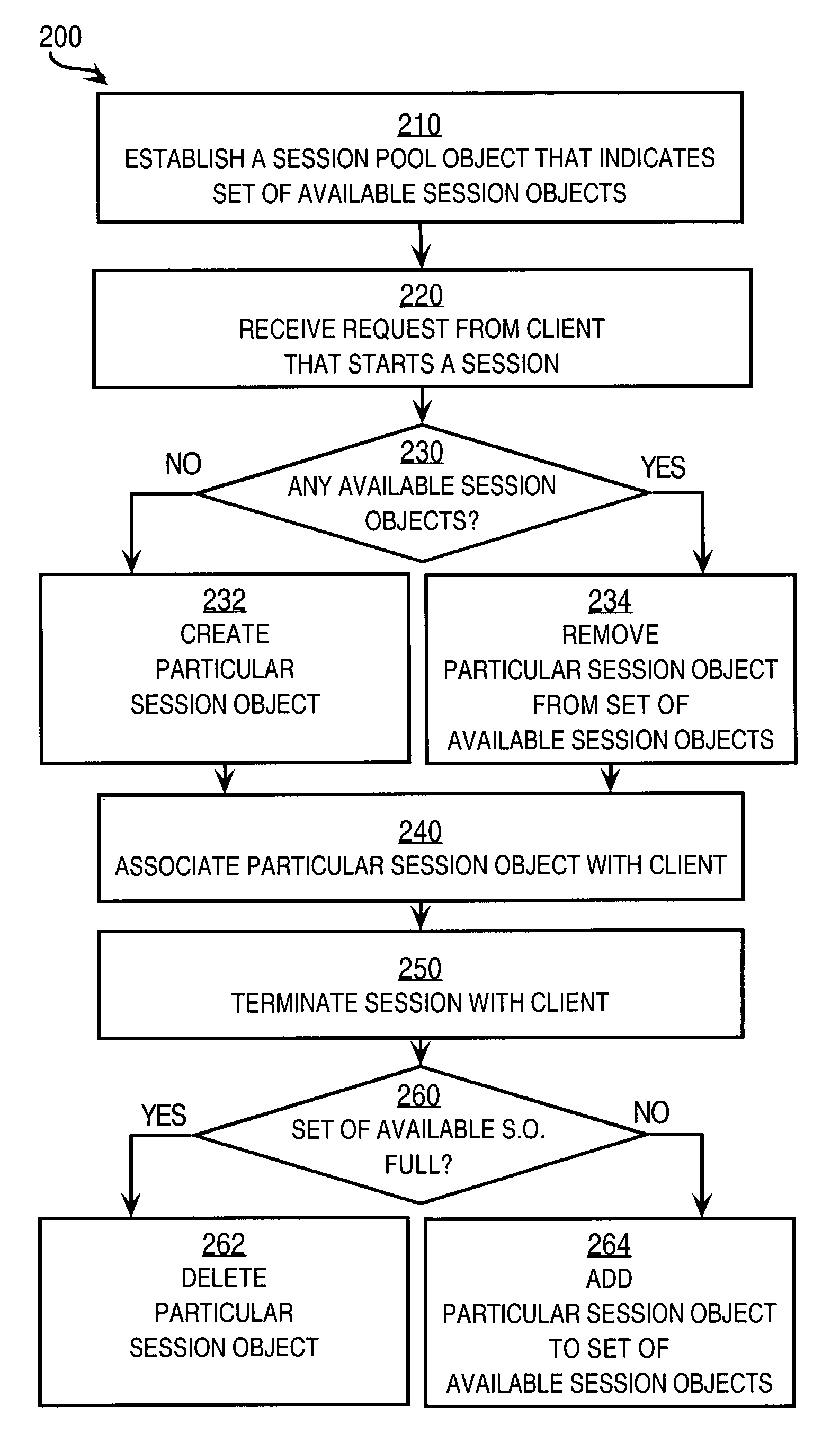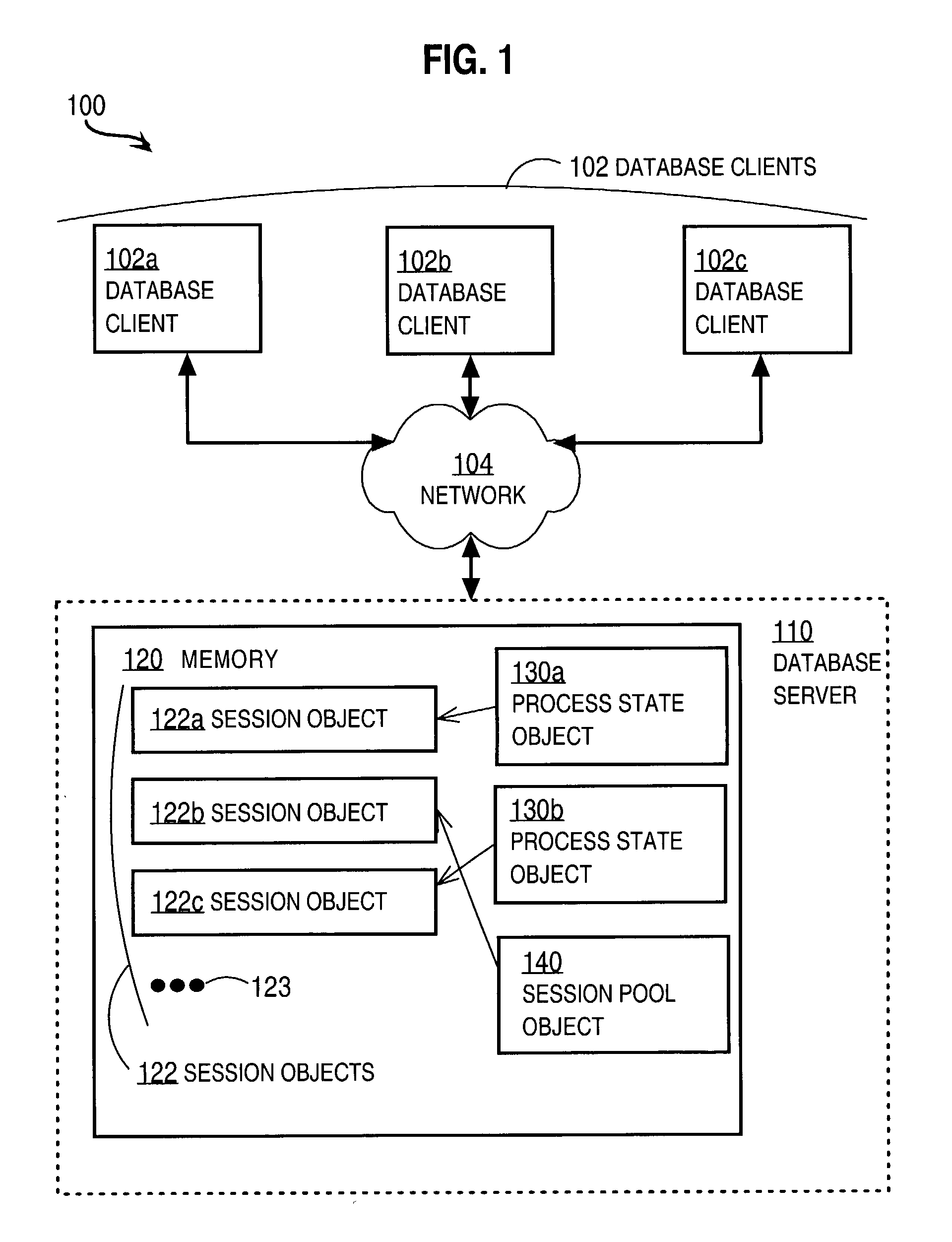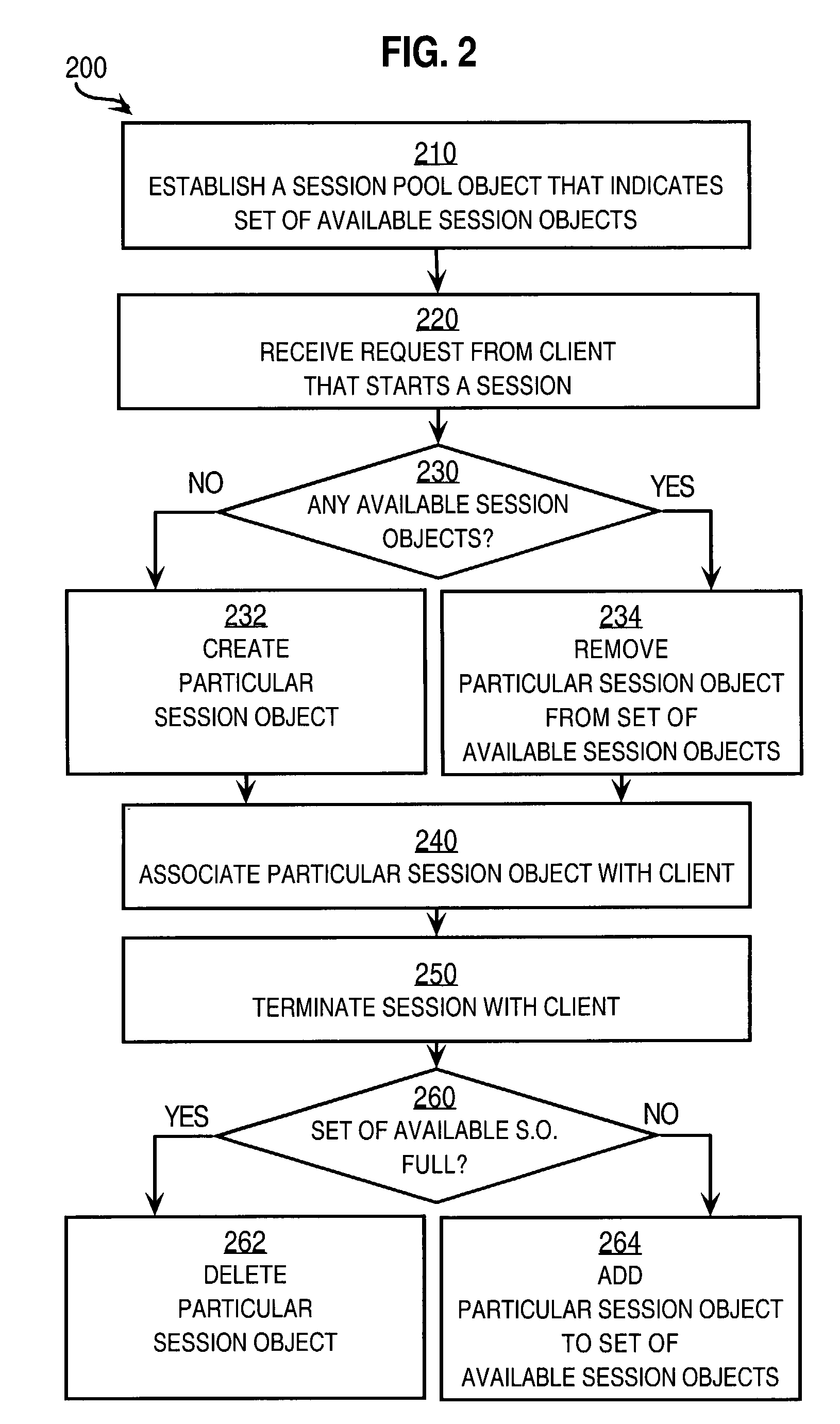Techniques for increasing efficiency while servicing requests for database services
a database and efficiency technology, applied in the field of database service requests, can solve the problems of database server response time, and significant amount of database server and server host resources consumed
- Summary
- Abstract
- Description
- Claims
- Application Information
AI Technical Summary
Benefits of technology
Problems solved by technology
Method used
Image
Examples
example use
of Method
[0051]To further illustrate the operation of the techniques presented here, it is assumed that three clients 102a, 102b, 102c communicate with database server 110 using HTTP to request database services. It is further assumed, for purposes of illustration, that the current instance of database server 110 has recently started and that no session objects 122 have yet been created in memory 120. It is further assumed, for purposes of illustration, that process state object 130 has been created but that it contains no data indicating any client or connection, and that session pool object 140 has been created and contains data indicating a number of available session objects is zero and the list of available session objects is empty.
[0052]When an HTTP1.0 request for database services is received from database client 102a, a new session is started as in step 220. In step 230, it is determined by accessing the session pool object 140 that there are no available session objects. Co...
PUM
 Login to View More
Login to View More Abstract
Description
Claims
Application Information
 Login to View More
Login to View More - R&D
- Intellectual Property
- Life Sciences
- Materials
- Tech Scout
- Unparalleled Data Quality
- Higher Quality Content
- 60% Fewer Hallucinations
Browse by: Latest US Patents, China's latest patents, Technical Efficacy Thesaurus, Application Domain, Technology Topic, Popular Technical Reports.
© 2025 PatSnap. All rights reserved.Legal|Privacy policy|Modern Slavery Act Transparency Statement|Sitemap|About US| Contact US: help@patsnap.com



